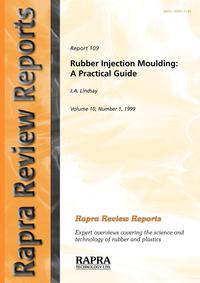This review has been written as a practical guide to rubber injection moulding. Many injection moulding processes produce rejects or scrap, because they depend on a number of variables. To eliminate waste it is necessary to learn how to recognise the variables that cause problems, and then experiment to understand their interdependence. This can be developed to a fine art and lead towards "right first time" processing, the commercial ideal. There are many factors which cause success or failure in rubber injection moulding from the design stage of a product, through choosing and setting up machinery, to experimenting to find the best operating conditions. Varying any one factor, such as the polymer additives, can have a knock on effect on the ability of the equipment to adequately process the rubber. For example, some additives cause an increase in mould fouling which entails increased downtime cleaning moulds, and defects in components. This may necessitate changes in compounding or experimentation with different mould release agents. This review describes the problems that arise and provides pointers to the aspects of the injection moulding process which could be the cause, together with possible solutions. The review is addressed to potential customers and personnel in the injection moulding industry, and emphasises quality control including working to the ISO 9001 Standard. It also highlights the need to consider the economics of operation prior to taking on new projects. For example the equipment used for one type of polymer is not automatically suitable for another. Similarly, some component shapes are particularly difficult to mould, and tight tolerance levels may necessitate additional costs. Above all, the customer-manufacturer relationship is emphasised at all stages. The customer is encouraged to examine the capabilities of the manufacturer, and the manufacturer is encouraged to develop a good understanding of the exact requirements of the customer. The latter include not only component specifications and levels of tolerance, but quantities and delivery times. John Lindsay is in an ideal position to write this review. He has over twenty years of experience working for BTR Automotive as a technical manager. During his time at BTR he was responsible for setting up injection moulding, reformulating rubbers to match the new production process, and virtually eliminating scrap. He has also worked as a chemist developing rubber formulations for the injection moulding of valve liners, which have to withstand a wide variety of service fluids. He is an acknowledged expert in the field of flow modelling of rubber in injection moulding, Failure Mode and Effects Analysis (FMEA), and rubber bonding technology. He has trained in the use of the quality standards included in ISO 9000, and specifically ISO 9001. This Rapra Review Report contains an additional indexed section of several hundred abstracts from the Polymer Library on rubber injection moulding, which provide extensive further reading. Это и многое другое вы найдете в книге Rubber Injection Moulding - A Practical Guide (John A. Lindsay)
Rubber Injection Moulding - A Practical Guide John A. Lindsay
Подробная информация о книге «Rubber Injection Moulding - A Practical Guide John A. Lindsay»
